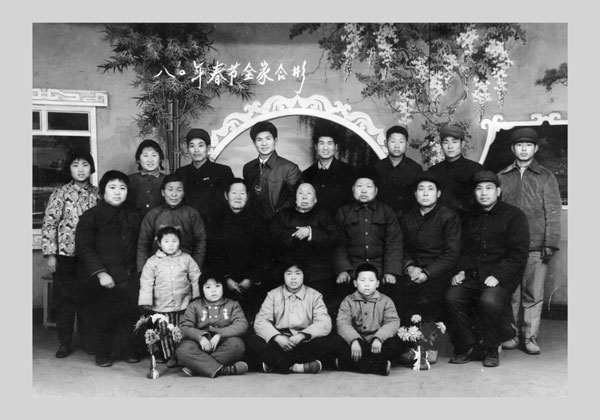 |
|
Taking a family photo in a studio was a ritual for significant occasions like the Spring Festival, when cameras were rare for most people. [Photo/China Daily]
|
The countryside's early shutterbugs were mostly self-taught. Some learned from relatives in cities, some from Western missionaries and some picked up their skills during the Japanese occupation in the 1930s, when the invading army made them photograph villagers for identification.
Most of the book's shutterbugs took to the trade after New China's founding in 1949. They typically worked in the county towns' studios. In 1956, the government initiated a policy merging all private studios into a single State-owned entity.
From the late '50s to the early '80s, villagers had to travel to the nearest county to get photographs taken. Consequently, State-run studios inadvertently became centers of the countryside's visual memory.
Photographers sometimes hauled their clunky equipment by bike from village to village to snap weddings, newborns and family reunions.
"Villagers welcomed us with great enthusiasm," recalls 85-year-old Li Jianxing, who worked in Anhui's Bozhou.
"They'd shout: 'Look! Here comes the photographer from the county!'"
But things changed with the 1980s' reform and opening-up, when private studios started popping up and cameras became available to more ordinary people.
Photo critic Jin Yongquan, who encouraged Wang to write the book, notes in its preface: "This is a valuable work. What Wang presents is a vital, yet long overlooked, component of modern visual culture. Its narratives and photos - while they may seem overly detailed and incoherent - create a mosaic of the geographical and historical imagination of photography in the Chinese countryside."
